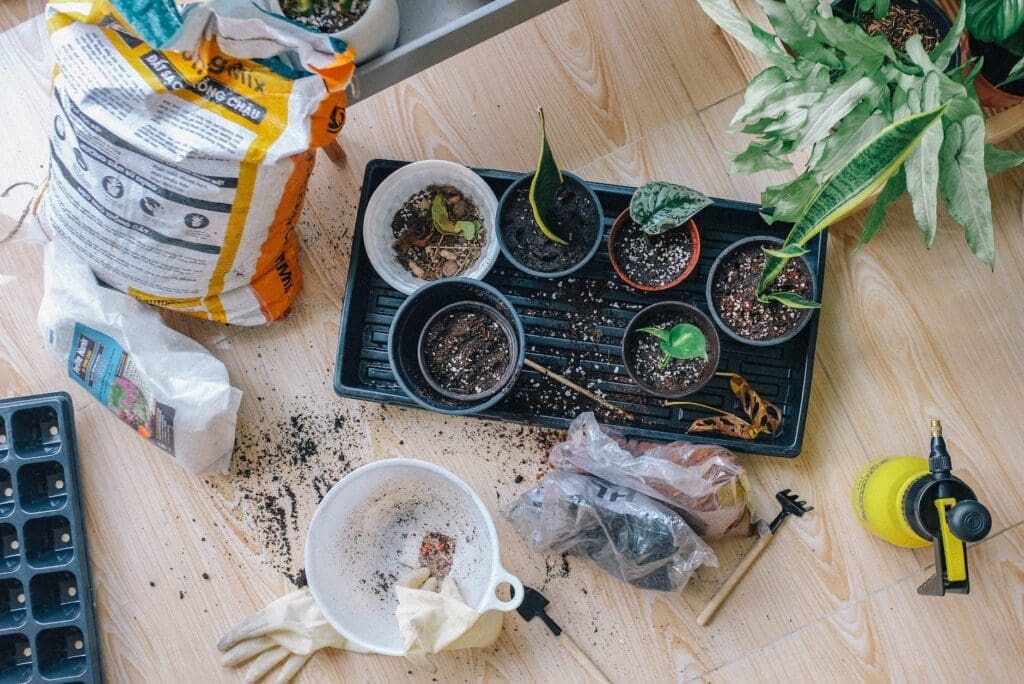
The Ultimate Guide to Growing a Vegetable Garden Without a Yard
Note: Affiliate links appear in this article.
Just because you don’t have a yard doesn’t mean you can’t grow your own vegetables. With some creativity and the right approach, you can cultivate a thriving vegetable garden in small spaces such as balconies, patios, or even indoors. This guide will walk you through the steps to successfully grow a vegetable garden without a yard or community garden.
Start by choosing the right location for your vegetable garden. Look for a spot with at least 6-8 hours of direct sunlight daily. This could be a balcony, a windowsill, or a well-lit indoor space. Ensure the area has proper ventilation and access to water. Consider investing in a grow light if your space doesn’t receive enough natural sunlight.
When growing vegetables in limited space, selecting suitable containers is crucial. Opt for containers with drainage holes to prevent root rot. You can use various containers, including pots, grow bags, or even repurposed items like buckets or crates. Make sure to choose containers deep enough to accommodate the root systems of your chosen plants. Consider self-watering containers to help maintain consistent moisture levels.
Some vegetables are better suited for container gardening than others. Look for compact, dwarf, or bush varieties requiring less growing space. Some great options include cherry tomatoes, lettuce, spinach, radishes, peppers, and herbs like basil or parsley. Always check the specific growing requirements of each plant to ensure they will thrive in your chosen space.
High-quality soil is essential for a successful container garden. Use a well-draining potting mix specifically designed for containers. Avoid using garden soil, which can compact and become waterlogged in containers. To provide your plants with essential nutrients, mix in organic compost or add slow-release fertilizer to the potting mix.
Follow the planting guidelines for each vegetable, considering spacing, depth, and timing. Sow seeds directly into the containers or transplant seedlings purchased from a nursery. Be mindful of overcrowding, which can lead to poor growth and disease.
Container gardens require more frequent watering than traditional gardens. Check the soil moisture daily and water when the top inch of the soil feels dry. Water deeply and consistently to ensure the entire root system is adequately hydrated. Consider using a watering can with a narrow spout for precise watering.
Some vegetables, such as tomatoes and peppers, may require additional support as they grow. Use stakes, cages, or trellises to help support your plants and prevent them from becoming too top-heavy.
Monitor your plants regularly for signs of pests or diseases. Early detection and intervention are key to maintaining a healthy garden. Use organic or chemical-free solutions to address any issues, such as neem oil or insecticidal soap.
Read Our Beginners Guide To Horticulture
Harvest your vegetables when they reach the appropriate size and maturity. Regular harvesting encourages continuous growth and ensures you enjoy the freshest, most delicious produce. Use gardening scissors or a sharp knife for clean cuts.
Growing a vegetable garden without a yard or community garden is possible with some creativity and dedication. You can create a flourishing garden in any small space by choosing the right location, containers, and vegetables. Follow these tips and enjoy the rewards of fresh, homegrown produce.
Read More: Top 5 Gardening Tools For The Summer of 2023
Prices and availability are subject to change. Last update on 2025-12-24 / Affiliate links / Images from Amazon Product Advertising API
